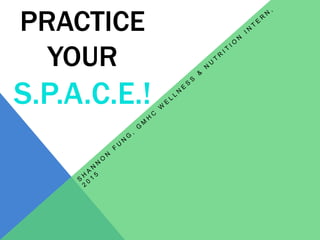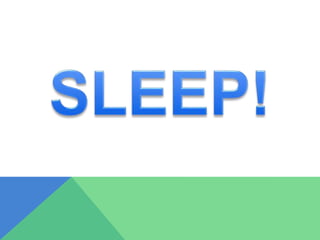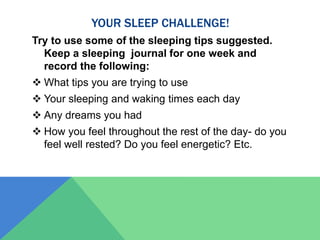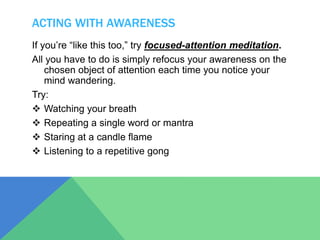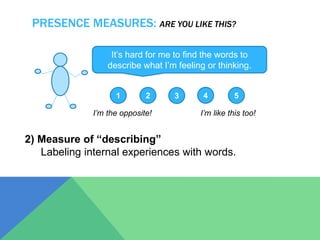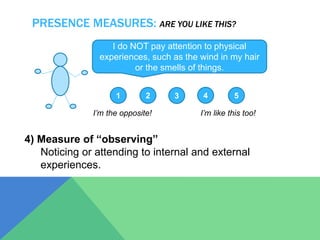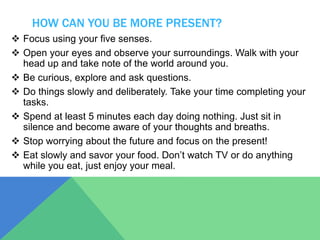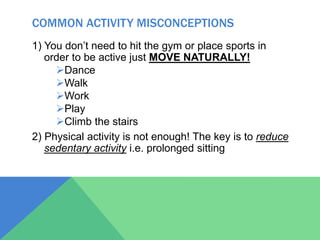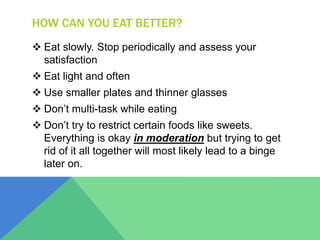This document discusses 5 behavioral factors (S.P.A.C.E.) that can impact one's ability to achieve goals: sleep, presence, activity, creativity, and eating. For each factor, it provides definitions, benefits, outcomes from studies, and tips for improvement. Regarding sleep, it discusses sleep cycles, benefits of adequate sleep, sleep studies showing impacts on health and behavior, and tips for better sleep. For presence, it defines mindfulness, provides mindfulness measures and exercises to improve awareness. It also outlines benefits and types of meditation. The document then discusses activity, emphasizing the importance of reducing sedentary time and moving naturally, as well as tips to incorporate activity. Finally, it explores the benefits of
